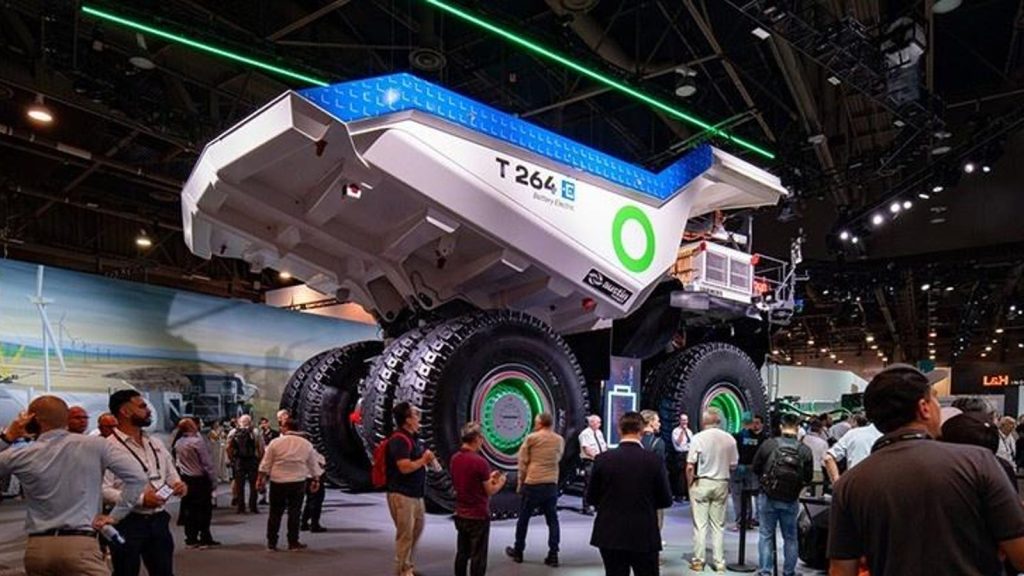Electric car battery technology has been improving quickly and packs become cheaper every year. But getting the most out of an EV’s energy storage isn’t just about the underlying chemistry. According to “battery intelligence” company Elysia, there is plenty of untapped potential in the cells that could be unleashed with more sophisticated software control.
Elysia might not be a name you’re familiar with. However, it used to be Williams Advanced Engineering and changed its name after being purchased by giant mining company Fortescue. That might seem like an odd acquisition choice, but on closer analysis, it fits with the Australian iron ore producing giant’s overall business strategy.
Elysia: Decarbonizing The Mining Industry
“We have a very ambitious mission to decarbonize,” says James Wallace, Head of Product at Elysia. “Fortescue is traditionally a mining company based in Western Australia. Our founder, Doctor Andrew Forrest, realized that the mining industry was causing destruction to the environment, and we needed to do something about it. He set an ambitious mission for us to decarbonize and then help the rest of the industry decarbonize after that.”
“That started with the massive, 264-ton haulage trucks used in mining,” continues Wallace. These vehicles consume enormous volumes of diesel fuel. Fortescue looked for decarbonized alternatives and found there was nothing on the market. “We needed to do that ourselves and build the batteries for the trucks too.” This was how Fortescue came to acquire Williams Advanced Engineering, which was building battery packs for high performance applications, such as Formula E and Extreme E, alongside electric hypercars.
“Williams Advanced Engineering since then has continued to develop solutions for motorsports and high performance, but also now builds battery packs for incredibly intensive mining truck applications, where the battery could be fast charged 6 or 7 times a day,” says Wallace. “Charging speeds could be up to 6MW on the mining sites. Uptime is critical in these applications, and ambient temperature could be 40C. The conditions are rugged and dusty.” Fortescue recently announced an all-electric T264 truck created in collaboration with Liebherr, which incorporates a whopping 1.8MWh battery – 18 times the size of the one in a current Tesla Model S.
“We will be designing and building the battery packs for the Liebherr trucks that will then be sold across the world to decarbonize mining,” says Wallace. “We’re not just building the truck. We must build everything upstream of the truck and change the operations of the mining, which is incredibly complex, including carbon free electricity generation and management of the electricity on the mine site as well.” The work Elysia has done on Formula E’s yet-to-be-implemented in-race rapid charging will contribute to the 6MW speed that is planned for the T264 truck.
Elysia: From Mining To Battery Intelligence For Consumer EVs
This is where Elysia’s work with software comes in, which will be applicable to more consumer-oriented vehicles than the T264. “Part of the challenge with fast charging is not just the delivery of the power but delivering that power in a way that doesn’t damage the battery pack,” says Wallace. “You’re not just delivering a flat profile against that charge. Often, you’ll see manufacturers use a stepped profile, so the pack doesn’t reach a high temperature during that charge. We’re trying to do more intelligent things by looking at the temperature of the pack to protect against plating during that fast charge because that’s the main safety risk. Lithium plating is when you charge too fast. The lithium ions build up on the battery’s negative electrode, and they start plating on top of each other. It’s especially a risk when you try and fast charge at very low temperatures.”
“Over the last 15 years of developing high performance applications, we got very good at battery modeling and monitoring, employing software to more intelligently use that battery,” says Wallace. This includes both the algorithms operating locally on the battery and remote monitoring in the cloud, which is what Elysia supplies to customers. The aim is to prioritize safety but also make the most efficient use of batteries, including longevity. “With the intelligence that we have with Elysia, we know we can stretch batteries safely beyond the typical end of life. We can also make them charge faster, or slower to re-balance elements within the system.”
Elysia’s battery intelligence involves algorithms on the battery for “state estimation”. This provides “understanding what energy’s available with that battery at any given time”, according to Wallace, including the current health status. The true value for this may vary greatly from what the in-vehicle system reports. “We’ve seen mass market vehicles where the true state of health of the battery is 10% worse than what is reported by the system. The battery is telling you it’s at 95% state of health, but the true battery state of health is 85%.”
Applying Elysia Physics Models In The Cloud
Cars are now streaming an immense amount of data to the cloud. Instead of this sitting with the manufacturer, Elysia is combining it with battery models to provide further insight. “This is exactly what we’re doing with Jaguar Land Rover, providing deeper insights into situations where degradation varies,” says Wallace. This could be because a taxi driver is doing lots of miles every day, or they are frequently using rapid charging, or it could be because they are in a hotter climate. “JLR receives over 50 billion diagnostic data points from its existing vehicle fleet per month. We apply a battery model to this data, which we call ‘physics informed’.” This goes beyond just machine learning, which reveals patterns but doesn’t explain the cause of the behavior it uncovers.
Elysia is hoping to apply its expertise to improve the way vehicle manufacturers deploy batteries in their EVs. “One of the problems we have now is batteries are oversized,” says Wallace. “Because we can’t observe what a specific battery’s current state is and predict reliably how that battery’s going to age, the approach OEMs are taking is to oversize that battery pack, adding a few extra kWh to give themselves some wiggle room. Oversized batteries mean heavier systems that are more expensive. Elysia is giving engineers transparency not only for the in-life phase, but also when they come to design the next battery, so they’re able to predict how that degradation is likely to happen. This means they can reduce battery oversizing, which will help with cost.”
“Our goal is to connect those systems and give you a battery that is uniquely suited to your use case,” continues Wallace. “For example, if we notice your battery is degrading at a slower rate, we could unlock more functionality without changing any of the hardware on that system. We could unlock faster charging or more usable energy, so you get more range. Battery degradation is path dependent.” Two batteries with the same state of health right now might degrade at different rates after that, depending on usage patterns. “You need that full history of the battery.”
Better knowledge in this area could lead to improved extended warranties on secondhand EVs’ batteries, too. “OEMs have been overly conservative about the degradation expectation on batteries,” says Wallace. They could give better warranties on those batteries than they currently are. But manufacturers who have invested in collecting the necessary historical information will be better placed for this than those that haven’t.
Unleashing New Battery Performance With Elysia Intelligent Software
Elysia’s leading role in enabling this will be largely based on its experience electrifying mining trucks. “Mining is an incredible sandbox for us to innovate in electrification,” says Wallace. “These systems are being cycled intensely, so we see accelerated degradation profiles. But also, there are lots of levers for us to optimize that battery because it’s the Fortescue sandbox, and we’re able to fit those applications directly to what our business outcomes are. That allows us to optimize not just the software, but also the design of the battery, its servicing, its charging, and the surrounding operations. Our history in motorsports provides another incredible playground to innovate, push technologies and use the data.”
“Elysia’s battery intelligence is all about using software to unlock new battery life, safety and performance,” concludes Wallace. “We’re using this incredible testbed that we have within Fortescue and our own batteries to drive our understanding. We’re already operating at scale with JLR, helping their engineers on the ground to identify quality issues before they impact customer usage, but also looking for opportunities for how they can unlock performance on existing vehicles.” The results could be greater battery longevity, faster charging, and longer warranties that provide assurance as a vehicle passes through multiple owners – all derived from more sophisticated software.
Read the full article here










